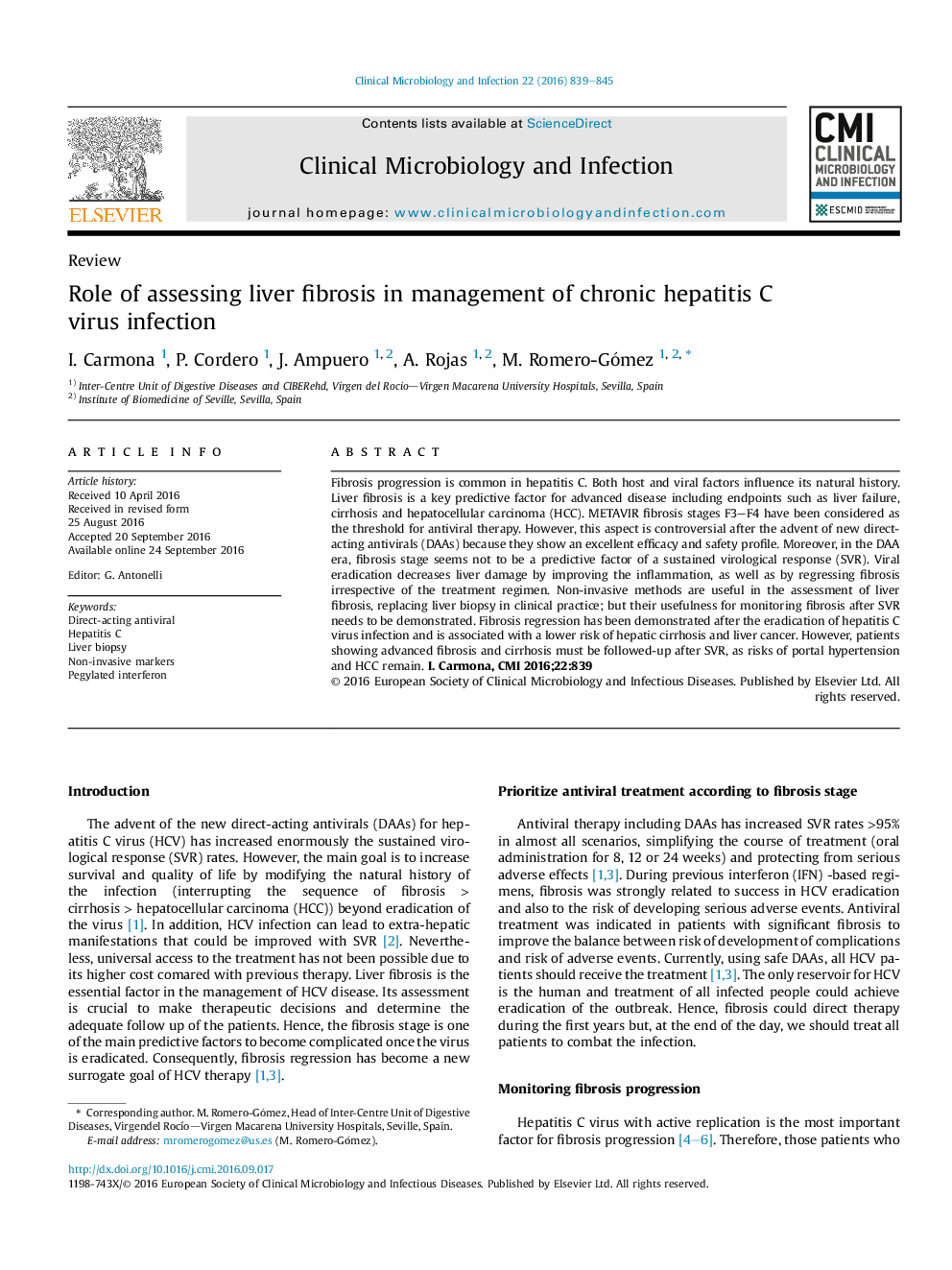| کد مقاله | کد نشریه | سال انتشار | مقاله انگلیسی | نسخه تمام متن |
|---|---|---|---|---|
| 5671552 | 1408060 | 2016 | 7 صفحه PDF | دانلود رایگان |

Fibrosis progression is common in hepatitis C. Both host and viral factors influence its natural history. Liver fibrosis is a key predictive factor for advanced disease including endpoints such as liver failure, cirrhosis and hepatocellular carcinoma (HCC). METAVIR fibrosis stages F3-F4 have been considered as the threshold for antiviral therapy. However, this aspect is controversial after the advent of new direct-acting antivirals (DAAs) because they show an excellent efficacy and safety profile. Moreover, in the DAA era, fibrosis stage seems not to be a predictive factor of a sustained virological response (SVR). Viral eradication decreases liver damage by improving the inflammation, as well as by regressing fibrosis irrespective of the treatment regimen. Non-invasive methods are useful in the assessment of liver fibrosis, replacing liver biopsy in clinical practice; but their usefulness for monitoring fibrosis after SVR needs to be demonstrated. Fibrosis regression has been demonstrated after the eradication of hepatitis C virus infection and is associated with a lower risk of hepatic cirrhosis and liver cancer. However, patients showing advanced fibrosis and cirrhosis must be followed-up after SVR, as risks of portal hypertension and HCC remain.
Journal: Clinical Microbiology and Infection - Volume 22, Issue 10, October 2016, Pages 839-845